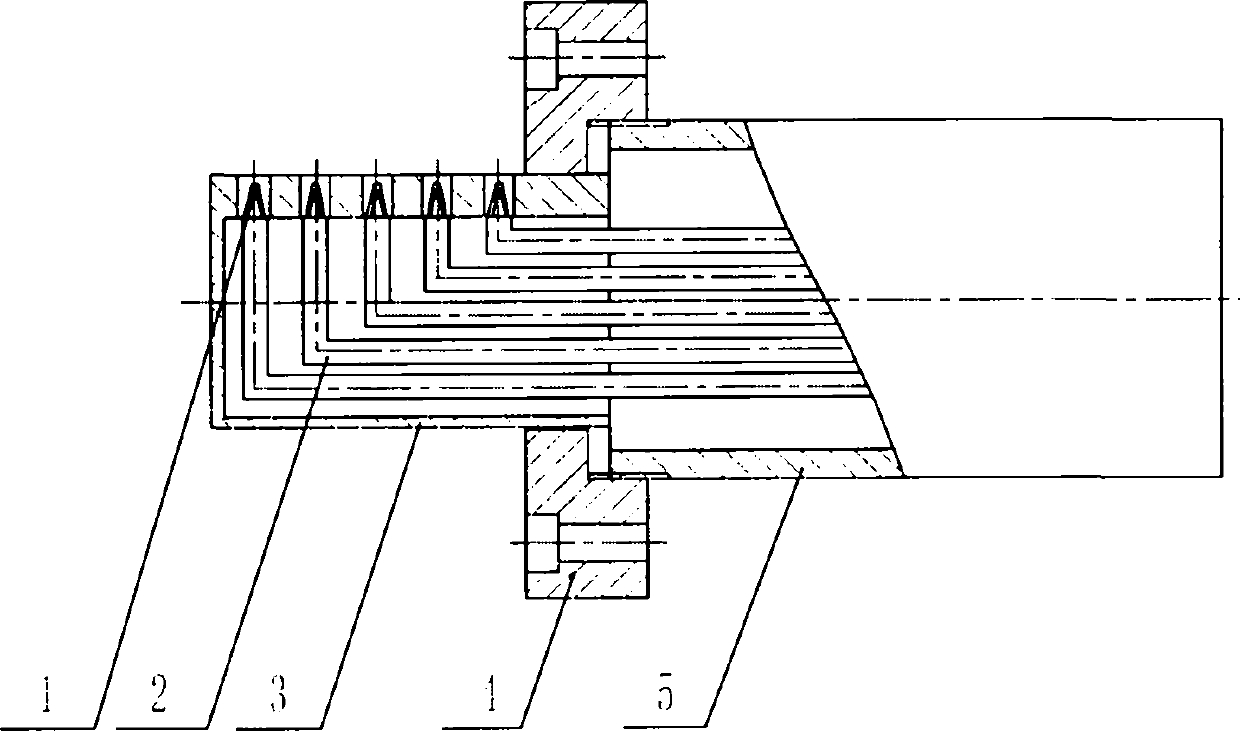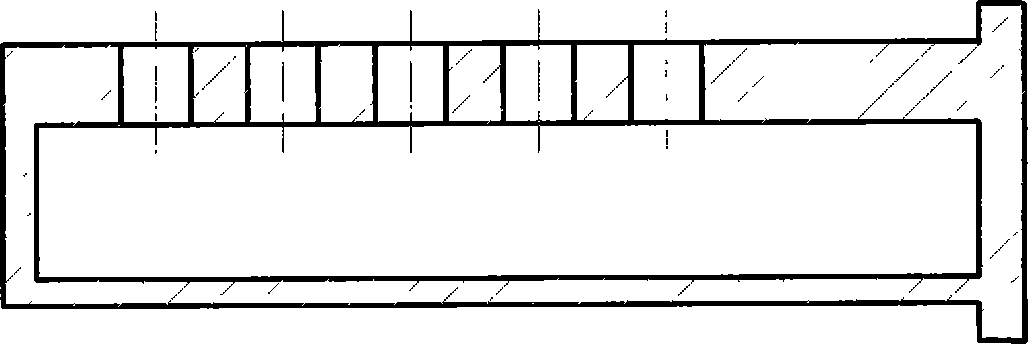Cooling-free type high temperature sensor based on composite material
A high-temperature sensor and composite material technology, which is used in thermometers, instruments, thermometers and other directions that use electrical/magnetic components directly sensitive to heat. Longer life, increased continuity, and less temperature measurement error
- Summary
- Abstract
- Description
- Claims
- Application Information
AI Technical Summary
Problems solved by technology
Method used
Image
Examples
Embodiment 1
[0025] A non-cooling high temperature sensor based on composite materials, including a thermocouple wire 1, an insulating porcelain tube 2, a casing 3, a mounting flange 4 and a plug 5; the casing 3 is made of C / SiC composite material, and the preparation method of the casing 3 is as follows :
[0026] Step 1. Weave a skeleton of the desired shape with C fibers to obtain a C fiber skeleton;
[0027] Step 2, growing SiC on the C fiber skeleton by means of chemical vapor deposition or chemical liquid phase deposition to complete the generation of the basic structure of the shell 3;
[0028] Step 3: Sinter the basic structure of the shell 3 described in step 2 in a sintering furnace. The basic structure of the shell 3 described in step 2 is sintered in a sintering furnace at a sintering temperature of 1850K.
[0029] The connection relationship of the high temperature sensor is as follows: the shell 3 is a hollow structure with a blind end, and a step is designed at the non-blin...
Embodiment 2
[0036] A non-cooling high temperature sensor based on composite materials, including a thermocouple wire 1, an insulating porcelain tube 2, a casing 3, a mounting flange 4 and a plug 5; the casing 3 is made of C / SiC composite material, and the preparation method of the casing 3 is as follows :
[0037] Step 1. Weave a skeleton of the desired shape with C fibers to obtain a C fiber skeleton;
[0038] Step 2, growing SiC on the C fiber skeleton by means of chemical vapor deposition or chemical liquid phase deposition to complete the generation of the basic structure of the shell 3;
[0039] Step 3: Sinter the basic structure of the shell 3 obtained in Step 2 in a sintering furnace at a sintering temperature of 1800K. For a thin-walled hollow shell 3 with a wall thickness of less than 2 mm, graphite is required to be used as a mandrel during weaving, and C fibers are woven on the graphite mandrel, and the graphite mandrel is removed after SiC growth is completed.
[0040]The co...
PUM
 Login to View More
Login to View More Abstract
Description
Claims
Application Information
 Login to View More
Login to View More - R&D
- Intellectual Property
- Life Sciences
- Materials
- Tech Scout
- Unparalleled Data Quality
- Higher Quality Content
- 60% Fewer Hallucinations
Browse by: Latest US Patents, China's latest patents, Technical Efficacy Thesaurus, Application Domain, Technology Topic, Popular Technical Reports.
© 2025 PatSnap. All rights reserved.Legal|Privacy policy|Modern Slavery Act Transparency Statement|Sitemap|About US| Contact US: help@patsnap.com



